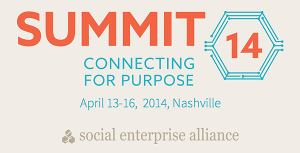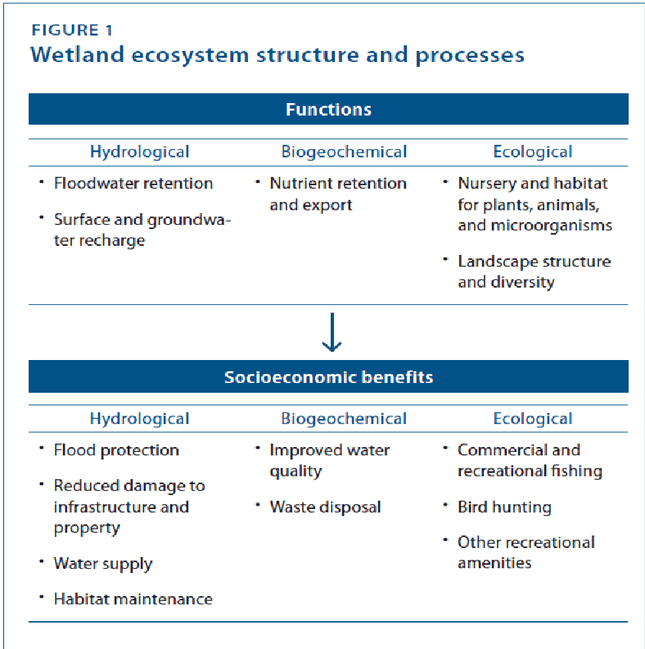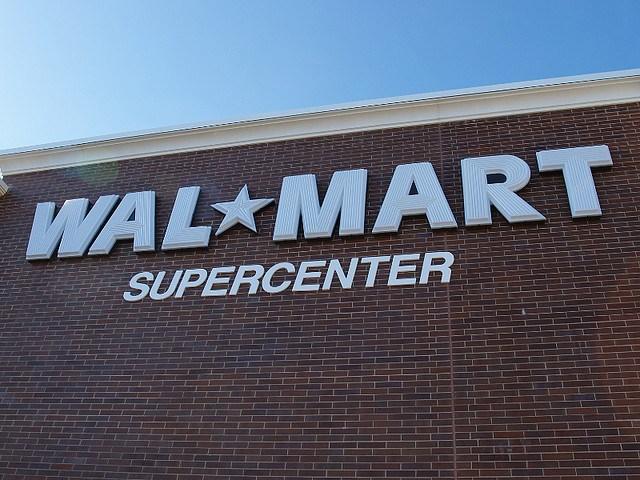Should Citibank Bail Out Citi Bike?


Citi Bike is hitting some bumps in the road as NYC Bike Share, the operating company, struggles to meet revenue targets and deal with ongoing operational snags, according to recent news reports. As the popular New York City bike-share program — which, unlike most programs, does not use public money — approaches its first anniversary, NYC Bikeshare is seeking to raise $20 million through investors and sponsors to smooth out problem areas and eventually expand. But, despite the program’s popularity, new sponsors have reportedly been hesitant to jump on board, concerned that heavy branding from Citibank, the namesake corporate sponsor, on bikes and kiosks would drown out any real marketing opportunity.
So, should Citibank, which -- lest we forget -- received $476 billion in bailout funds in the wake of the financial crisis, bail out the fledgling bike-share program in a good-faith CSR gesture? Or should NYC Bike Share shoulder the blame for poor management and revenue planning?
The Citi Bike program raises revenue in three ways: membership/rental fees, advertising and sponsors like Citibank, which paid $41 million for program branding rights. While resident New Yorkers have been keen to sign up for access to the two-wheelers (annual memberships surpassed the 100,000 mark last month), tourist ridership, which generates more profit than annual passes, trickled to a halt during this year’s arctic winter.
Besides lackluster temporary pass purchases, NYC Bike Share has had to deal with unexpected increases in costs from storm damage, as well as the high cost of redistributing bikes by truck to better match expected demand. Meanwhile, Public Bike System Co. (PBSC), the Canadian manufacturer of the bikes and kiosk software, filed for bankruptcy in January, and NYC Bike Share’s general manager resigned last month.
All of this has amounted to what the city’s transportation commissioner, Polly Trottenberg, recently described as “a number of financial and operational challenges.” NYC Bike Share, a subsidiary of Portland-based Alta Bikes, is hoping to redress these with a new round of funding. The problem is, according to media reports, that potential new sponsors (understandably) don’t want to put money into a rolling Citibank advertisement.
Mayor Bill de Blasio has ruled out public funding as an option for the program and has forbidden the operator to issue rate hikes until they sort out operational issues.
Despite program hiccups, the Citi Bike program has been a runaway success from the perspective of its namesake global financial institution, which just failed a Federal Reserve stress test and is currently embroiled in a $400 million loan fraud scandal in Mexico. As Elyssa Gray, creative marketing director for Citibank, recently told Advertising Age, the company netted $4.4 million in earned (free) media coverage in the 10 months since launch. Citibank committed a total of $41 million over five years (equal to $8.2 million per year) to have its name and signature blue logo hue splashed across bikes from Brooklyn to the Upper East Side.
The marketing move appears to have achieved its initial purpose, which was to turnaround negative perceptions of the bank following the financial meltdown that started in 2007. Citibank’s internal metrics suggest that it has achieved this aim: According to Gray, all marketing metrics tracked by the company saw a double-digit jump in the first three months after launch, including a 25 percent increase in “brand preference.” In the same April interview with Advertising Age, she indicated the company might even expand the bike-share advertising model to other cities.
Citigroup drew $20.1 billion in revenue in the first quarter of 2014 with a net profit of $3.9 billion, up 4 percent from the same time last year. At the time of writing, there were no reports that the bank would be contributing additional funds to the Citi Bike program.
Once we accept corporate marketing into the services we use on a daily basis, what responsibilities, if any, should those sponsors have in ensuring adequate operation of those services? Of course, program operators should be capable and held accountable for missteps, including, in this case, what may have been an undervalued sponsorship price -- considering the benefits Citibank has accrued and the difficulty of attracting additional sponsors. Nevertheless, highly visible branding should theoretically force sponsors to keep some skin in the game — if the program is a failure, it damages brand value. But it appears Citibank is already satisfied with the marketing results from an outstanding program start and has sufficiently distanced itself from the bike-share operator to avoid brand damage.
Which begs the question: Once the sponsors have reaped the desired goodwill through a knock-out launch, how do you keep corporate partners invested in success when they have no motivating incentive?
Image credit: Flickr, Mike Licht
EPA Data Shows U.S. Greenhouse Gas Emissions Slightly Decreased in 2012


Climate change is making the news for a number of reasons, including Showtime’s new series called “Years of Living Dangerously.” The rise in greenhouse gas emissions is responsible for climate change, and the majority of scientists agree that most of the increase is caused by human activity.
That said, there is a bit of good news when it comes to U.S. GHG emissions. The Los Angeles Times reports that greenhouse gas emissions in the U.S. decreased by 3.4 percent from 2011 to 2012. The report is based on the EPA’s recently released inventory, which cites “multiple factors” for the decrease in emissions -- including reduced emissions from electricity generation, fuel efficiency in vehicles, a decrease in the price of natural gas and reductions in miles traveled. Greenhouse gases in 2012, according to the inventory, were 10 percent below 2005 levels. Since 1990, U.S. emissions have increased at an average annual rate of 0.2 percent.
U.S. GHG emissions in 2012 totaled 6,526 million metric tons of carbon equivalent. Carbon dioxide accounted for most (82.5 percent) of all GHG emissions. The largest source of carbon emissions was fossil fuel combustion. Methane accounted for 9 percent of the emissions, while nitrous oxide accounted for 6 percent and fluorinated gases accounted for 3 percent. Methane emissions decreased by 10.8 percent since 1990. Most methane emissions came from domestic livestock, natural gas systems and wastes breaking down in landfills.
Data on GHG emissions from the Energy Information Administration (EIA), released earlier this year, is not entirely positive like the EPA’s data. Once all data is in, energy-related carbon emissions in 2013 are expected to be more than 2 percent above the 2012 level. The EIA attributes the small increase to “coal consumption in the electric power sector,” pointing out that coal has “regained some market share from natural gas since a low in April 2012.” However, there is some good news. Emissions in 2013 are slightly more than 10 percent below 2005, according to EIA data. The EIA characterizes the decrease as “ a significant contribution towards the goal of a 17 percent reduction in emissions from the 2005 level by 2020 that was adopted by the current administration.” The EIA data shows more good news. Carbon emissions from energy activities decreased four out of six years since peaking in 2007, and in 2012 they were “historically low.”
Regional cap-and-trade programs in the U.S.
The U.S. does not have a cap-and-trade program on the federal level, but there are several regional programs in place. The Regional Greenhouse Gas Initiative (RGGI) is a program to cap and reduce carbon emissions from the power sector. It involves Northeastern and Mid-Atlantic states including Connecticut, Delaware, Maine, Maryland, Massachusetts, New Hampshire, New York, Rhode Island and Vermont.
The RGGI began selling auction permits in 2008. In 2012, California’s cap-and-trade program took effect. A year later, on Jan. 1, 2013, the enforceable compliance obligation began for GHG emissions. California is working with Canadian provinces (British Columbia, Ontario, Quebec and Manitoba) through the Western Climate Initiative to develop “harmonized” cap-and-trade programs. Perhaps through these regional efforts, U.S. GHG emissions will continue to decrease.
Photo: Wigwam Jones
'Netflix for Legos' Is More Than Mere Child’s 'Pley' in the Sharing Economy


Toddlers and preschoolers exchanging toys through the sharing economy – no, it’s not a scene from Portlandia’s recent sketch spoofing collaborative consumption, but the idea behind a startup that rents out Lego sets to kids and other fans of the iconic plastic bricks.
Billed as a “Netflix for Legos,” Pley ships its members a new-to-them Lego set, lets them play with it as long they like and sends customers another set once the previous toys are returned. The company offers a 15-day free trial and has three subscription plans that include all shipping costs: $15 per month to rent out small Lego sets, $25 a month for medium-sized sets and $39 a month for the largest sets.
Worried about the cleanliness of playing with rented toys? Pley sterilizes the plastic bricks with an eco- and kid-friendly solution that kills 99.99 percent of germs and bacteria and meets the same standards the Food and Drug Administration applies to restaurants, according to the company’s website.
The environmental benefits of lending Legos – rather than producing and disposing of new, individually-owned sets – are obvious, but Pley boasts on its website that each set it rents out saves a tree over the lifetime of its rental. To date, the company said it has prevented 90,200 pounds of ABS plastic from being manufactured, which has avoided 3.9 million pounds of carbon dioxide emissions.
The startup also helps members get rid of their own unwanted Legos in an environmentally responsible way: Customers can ship old Legos to Pley for free and receive credit towards the service. As part of a special offer for Earth Day, the company will give out $10 for every pound of plastic bricks – double its standard $5 trade-in rate.
Pley’s co-founder Elina Furman came up with the idea for the Lego lending service when the mom of two felt overwhelmed by the amount of the toys her children had and was concerned their copious material possessions were turning her kids into “little monsters,” Furman told Fast Company. Furman, who founded the daily email service A-List Mom that boasts 70,000 members, also wanted her children to turn off their TVs and computers and engage in play that stimulated their minds – like building with Legos. But stocking her home with Lego sets was expensive: Furman estimates she spent $2,000 dollars on the plastic bricks. After searching for a Lego subscription service and finding no such company, she decided to start one herself.
Because children’s clothes, toys and gear are, by nature, only used for a brief amount of time, they seem like perfect candidates for the burgeoning sharing economy. But rental companies for baby’s clothes haven’t had success: Plum Baby Gear shut down two years ago, and Good Karma changed its name and rental model and became the online consignment store Moxie Jean. Lending out toys is much different than renting clothes, however, which come in so many different styles and sizes that it makes it challenging to base a subscription service on them.
Starting at $180 a year, Pley’s membership fee may seem pricey – until you realize how expensive Lego sets are (a Star Wars Death Star will set you back $400) and how quickly kids get bored with and neglect their toys. And 15,000 families agree, all signing up for Pley subscriptions since the company launched last year. The startup, that has shipped 75,000 Lego sets from its warehouse in San Jose, Calif., is clearly still growing: It just secured $6.75 million Series A funding and has expanded from a two-person founding team to a 23-person staff, Fast Company reported.
Image credit: Pley
Passionate about both writing and sustainability, Alexis Petru is freelance journalist based in the San Francisco Bay Area whose work has appeared on Earth911, Huffington Post and Patch.com. Prior to working as a writer, she coordinated environmental programs for Bay Area cities and counties. Connect with Alexis on Twitter at @alexispetru
Interview: Eric Weinheimer Gives His Top Tips at the Social Enterprise Alliance Summit 2014


By Robbie Hall
There have been countless keynote sessions and workshops that have piqued my interest at the Annual Social Enterprise Alliance Summit, but one in particular that I would like to share is from a personal interview I had with Eric Weinheimer after the “State Of The Art on Employment Social Enterprises” session.
During the session Eric had mentioned “the thing no one is talking about” in regards to social enterprise and the strain it can put on your infrastructure if you are not adequately prepared. He drew the comparison of The Little Rascals and how often, when confronted with a troubling situation, the group would say, “Let’s put on a show!” This is similar to how some people view social enterprise. When you feel the pressure of X, Y or Z in your business or industry your instinct may switch to “Let’s become a social enterprise!”
It can seem like a quick fix to a problem. But when you do not have the necessary resources to support your goal then ultimately you end up with an unstable and unsustainable business.
Robbie Hall: Why is it important to be part of a larger community like SEA?
Eric Weinheimer: It is important to be part of a larger community like SEA so that you can learn about all of the innovation and the execution that is occurring in the social enterprise sector around the country. There are a ton of ideas, but who’s actually executing on those ideas? Who’s bringing these ideas into reality, and who’s doing it on scale? If we were not part of this SEA community, we would not have access to those best practices, networks, role models and inspiration.
RH: What would your advice be to anyone looking to join or become a social enterprise?
EW: Creating a social enterprise requires a great deal of resources, energy and inspiration. And if it is not managed properly, the creation of that enterprise can distract people from other important work that the nonprofit organization might be doing.You want to make sure that your proposed social enterprise complements, supports and enhances your mission. If it doesn’t, then you shouldn’t start a social enterprise.
RH: How do you deal with the tension and disengage between money and mission?
EW: It is certainly a delicate a balance. You need to make sure that your social enterprise is furthering the programmatic goals of the overall mission. But with no profit margin, there is no mission. When there is a conflict between the two, there needs to be a clear understanding for all the staff and board about which one takes priority and under what circumstances. The more clarity, the better.
RH: If you could go back, knowing what you know now in social enterprise, what would you do differently?
EW: I would ensure that we had more resources in our infrastructure to support the growth of social enterprise. I have seen the enormous strain that the lack of a strong infrastructure put on our existing nonprofit. It almost harmed the organization.
RH: What is the next step for someone looking to build up those resources for their infrastructure?
EW: There are a couple of things… You should be looking for funders who would consider grants or program-related investments for general operating and infrastructure support. But if you do not have those funders, then you should consider partnering or collaborating with complementary organizations that have similar missions, strong infrastructure and also are looking to start a social enterprise.
About Eric Weinheimer:
Eric has been the President and CEO of The Cara Program since 1996. Prior to this, Eric worked 10 years in the financial services sector. Eric earned a B.S. from Boston College and an M.B.A. from The University of Chicago Booth School of Business, where he was awarded the Distinguished Alumni Award for Public Service. Eric was selected as a member of the Emerging Leaders Program for the Chicago Council on Global Affairs, Class of 2011. Eric was also selected as a Chicago Community Trust Fellow for 2013.Eric was appointed by Illinois Governor Pat Quinn to the Social Innovation, Entrepreneurship and Enterprise Task Force. He serves on the Advisory Board for the Social Enterprise Initiative at The University of Chicago Booth School of Business. He also serves on the Board of Directors for Streetwise, the Social Enterprise Alliance, Chicago Chapter and the Oak Park River Forest Community Foundation.
Women in the Workforce: How Businesses Honor Them in 2014


By Lewis Robinson
Women are making leaps and bounds in the business world. Whether they are benefitting their employers by sales forecasting, overcoming roadblocks in volunteerism or leading their organizations to greatness as CEOs, they are finally being recognized by companies nationwide. Here are three examples of businesses that are honoring their female employees for all that they do.
1. Anita Borg Institute
ABI (the Anita Borg Institute) awarded Bank of America the Top Company in 2014 for Women in Computing. ABI is a nonprofit organization which has dedicated itself to inspiring, guiding and connecting women in technologically innovative organizations. They chose Bank of America as this year’s winner for their Computing ABIE Award, which will be presented on May 8th at the annual Women of Vision Awards Banquet in Santa Clara, Calif, because of its representation of women among its team of technological experts (and with only a 3 percent turnover rate). Bank of America’s Global Technology & Operations Executive Cathy Bessant says that the company is developing women to be great technologists as well as great leaders, and although they have made great progress there is still much to be done. Previous winners of the award include American Express, IBM and Intel.
Along with the Top Company award, ABI also distributes Women of Vision Individual Awards for three women in the categories of Social Impact, Leadership and Innovation. The Social Impact award went to Kathrin Winkler, senior vice president of EMC Corp. The Leadership award went to the President of Harvey Mudd College, Dr. Maria Klawe. The Innovation Award went to Dr. Tal Rabin, who is both a research staff member and manager at the Cryptography Research Group at IBM’s T.J. Watson Research Center.
2. Salesforce
Salesforce.com has a Woman of the Month campaign that recognizes women who help make the company a popular place to work. The honorees are nominated by coworkers, and the winners are chosen by FemmeForce, an internal network.February’s Salesforce Woman of the Month was Shawna Wolverton, Senior Director of Platform Product Management. She offers this advice to other women in the workforce: To someone who is just starting out, she says to look for advisors and mentors who can help you on your journey. For women who want to get ahead, she says to go look around and do the tasks that need to get done. And what about productivity at work? Wolverton advises booking yourself out on your calendar so that you have the time you need to get things done. Finally, she recommends that women talk to each other for help and support both in the workplace and outside of it. She says women have much to learn from each other.
3. WFF and Campbell Soup
The Women’s Foodservice Forum (WFF) and Campbell Soup Co. selected Julie Lim as the Volunteer of the Year for 2014. Julie Lim is the director of product development and national account executive for Royal Cup Coffee. The award is given to one who embodies the mission and goals of the WFF and has made both sustainable and significant contributions. Julie is active both with WFF and United Way, as well as various other volunteer programs in and around the Los Angeles area.
--
Not only are these extraordinary women examples of great leadership and service, the companies they work for are also ambassadors for helping to mentor and support women in the workforce. They are at the forefront of our nation’s growth and acceptance of exemplary women, and as such, other companies and organizations would do well to emulate their examples.
About the author: Lewis Robinson is a freelance business consultant specializing in CRM and sales. He's begun multiple corporations dealing with marketing and market research, and over the past 27 years has been recognized for his entrepreneurial advice and business insights.Recap - Stories and Beer: Farm-to-Bottle Entrepreneurship


It’s time for another Stories and Beer Fireside Chat on Thursday, April 17 at 6:30pm Pacific (9:30 Eastern) at the Impact HUB San Francisco – and online via web cam.
Please join us in person at Impact HUB SF - or online - for our latest “Stories & Beer Fireside Chat” on Thursday, April 17th at 6:30pm when TriplePundit’s Founder, Nick Aster, will be chatting with Damien Fagan and Jesse Friedman of Almanac Brewery.
In this chat, we’ll talk with beer entrepreneurs whose farm-to-bottle practices aim to revolutionize the big environmental impacts within the industry. Damien & Jesse will share their entrepreneurial stories about what it’s like to compete with the big boys. The chat will be valuable to anyone interested engaged in changing an industry, or just interested in enjoying a responsibly produced beer.
Video will start about 7pm pacific, but don't worry you can watch any time after that:
Schedule
- 6:30 – 7:00 – beers, grilled cheese, and networking
- 7:00 – 8:00 – fireside chat and Q&A
- 8:00 – 8:30 – networking
If you're joining online, please return to this page at 7:00pm PST on April 17th to tune in to the live stream. You can also pick up the conversation on Twitter at #3pChat.
About Damian:
Damian’s passion for brewing was ignited in 1992, when he made his first batch of homebrew while attending Michigan State University. That batch didn’t turn out so well, but the experience of making something that wasn’t readily available in the marketplace stuck. He’s been brewing innovation ever since. Damian co-founded Almanac Beer Company in 2010 with a vision of bringing a unique farm-to-bottle approach to brewing. As CEO of Almanac Beer Company, Damian manages general business operations of the company including strategy, finance and general administration. He also brings his award-winning branding, marketing and visual design experience to bear as Almanac’s creative director, responsible for brand strategy and positioning, marketing communications and visual design. Prior to Almanac, he was Co-Founder of Fagan Welles LLC, a boutique food and beverage design and marketing agency in San Francisco. Damian has marketed iconic brands such as Johnny Walker, Buchanan’s Whiskey, Zacapa Rum, Perrier Water, Tropicana Juices and many more.
About Jesse:
Jesse Friedman’s knowledge and passion for all things food and beer are both highly sought after and well documented. Since 2008, his culinary blog, BeerAndNosh.com, has attracted thousands of regular readers and has become a Bay Area institution—documenting the burgeoning craft beer and local food scenes in San Francisco. A deep working knowledge of the culinary arts and beer pairing expertise has made Friedman a sought after menu consultant—designing beer pairing menus for some of San Francisco’s top restaurants. As brewmaster and COO of Almanac Beer Company, Friedman is responsible for heading up beer production, sales and distribution as well as managing restaurant and retail relationships. He also develops each seasonal recipe, consulting with local farms and sourcing fruit for each release. Finally, he offers deep culinary expertise and credibility, working with chefs to create beer pairings and creating the culinary point of view for Almanac Beer Company.
Coastal Ecosystem Restoration Yields Remarkable Returns


In an increasingly urbanized, technologically complex and consumption-driven society, it's easy to lose sight of the advantages and benefits to be realized, as well as our fundamental reliance on, ecosystems and the services they provide.
Yet even as our preoccupation with jobs, economic growth and development has continued to intensify, we've been gaining greater understanding, and appreciation, of the value of ecosystems and ecosystem services -- not just in terms of environmental health and safety, but for their economic and broader social value as well.
On April 9, the Center for American Progress (CAP) and Oxfam America released, “The Economic Case for Restoring Coastal Ecosystems,” a report that highlights the remarkable economic value and benefits realized by coastal ecosystem restoration projects carried out right here in the U.S.
Coastal ecosystem restoration: More job creation than offshore oil and gas development
The CAP-Oxfam America study of coastal ecosystem restoration projects revealed some surprising economic results. As NOAA (National Oceanographic and Atmospheric Administration) Assistant Secretary of Commerce for Conservation and Management Mark Schaefer elaborated in a news release.
“We learned in a nutshell that there’s a win-win, if not a win-win-win, opportunity that presents itself when you invest in conservation. The economic benefits are remarkable … there’s a direct connection between what we’re doing to enhance the environment and what we’re doing to enhance economic opportunity.”
The CAP-Oxfam America study provides a basis for rethinking conventional ideas regarding return on investment, economic growth and development, including how to revitalize the U.S. economy and society, alleviate poverty, diminish widening gaps in income and wealth, and enhance innovation and economic opportunity.
Analyzing data on three coastal ecosystem restoration projects on different U.S. coasts, the project team found that for every $1 million invested in carrying out the projects:
- $15 in net economic benefits was created for every dollar spent.
- 17 jobs were created on average – almost double the 8.9 created per $1 million invested in offshore oil and gas development.
- Projects provide increased protection from storm surges, improved coastal recreation opportunities, and health benefits from increased levels of filter feeders, such as oysters.
The net 15:1 economic return and other benefits of these coastal ecosystem restoration projects flowed directly through from improved fish stocks, “due to the fact that 75 percent of the U.S.' most important commercial fish species relay on coastal environments at some point in their life cycle, with many young fish and crustaceans using habitats such as oyster reefs as nurseries,” CAP and Oxfam America point out.
Coastal ecosystems: Valuable natural resources for this and future generations
In addition to the higher economic value realized by improving marine breeding grounds and commercial fish and shellfish stocks, the project team also found that coastal ecosystem restoration projects improve human health and safety by reducing the vulnerability of communities, basic public services and infrastructure to extreme weather events, such as storm surges and rising sea levels. As elaborated in the press release:
“Coastal wetlands, along with serving as essential habitats for many species, help buffer coastal communities from strong storm surges by soaking up seawater...[U]p to 60 percent of the damage done to Gulf Coast communities from hurricanes happens because there aren’t healthy barrier ecosystems in place.”
Then there is the value of these coastal ecosystems in terms of carbon capture and storage, which is likely to increase in value as human carbon and greenhouse gas emissions continue to rise. As CAP and Oxfam America continue:
“Many of these ecosystems also serve as major carbon sinks, thus helping mitigate climate change as well as helping protect communities from its effects — coastal sea grass, for instance, stores more carbon dioxide per square kilometer than forests do.”
Rethinking coastal resource management: More in the way of prevention
NOAA's Schaefer emphasized the need to rethink coastal development and management by focusing and investing not just in coastal ecosystem restoration, but also on projects that will prevent the degradation and loss of environments in the first place. The report authors point to the loss of sediment from the Mississippi and Missouri Rivers as an example.
Louisiana loses an area of land the size of a football field every hour as a result of the construction of levees and dams along these rivers, they note. As a result, sediment that builds up and strengthens coastal marshes, and provides nutrients to the animal and plant life in these habitats, is being withheld. That alters the dynamics of these ecosystems and leaves them more susceptible to storm surges and sea level rise.
“We need to do a better job of helping people understand what is happening to our coastlines in aggregate, over time. We gain big when we conserve and restore coastal habitats — this is a no-brainer,” Schaefer stated.
Images courtesy of the CAP-Oxfam America study
Energy Efficiency: The Nation’s Cheapest Energy Resource


What method of electricity generation is cheaper than solar, wind, oil or even coal? Trick question; it’s energy you don’t need to produce in the first place. Energy efficiency programs aimed at reducing energy waste cost utilities only about 3 cents per kilowatt hour, while generating the same amount of electricity from sources such as fossil fuels can cost two to three times more, according to a new report by the American Council for an Energy-Efficient Economy (ACEEE).
The report, "The Best Value for America’s Energy Dollar: A National Review of the Cost of Utility Energy Efficiency Programs," looks at the cost of running efficiency programs in 20 states from 2009 to 2012 and finds an average cost of 2.8 cents per kWh -- about one-half to one-third the cost of alternative new electricity resource options. The report analyzes energy efficiency costs from states across the country, including: Arizona, California, Colorado, Connecticut, Hawaii, Illinois, Iowa, Massachusetts, Michigan, Minnesota, New Mexico, New York, Nevada, Oregon, Pennsylvania, Rhode Island, Texas, Utah, Vermont and Wisconsin.
“Why build more expensive power plants when efficiency gives you more bang for your buck?” said Maggie Molina, utilities, state and local program director for ACEEE and author of the report. “Investing in energy efficiency helps utilities and ratepayers avoid the expense of building new power plants and the harmful pollution that plants emit.”
The report says each dollar invested in energy efficiency measures yields $1.24 to $4 in total benefits for all customers, which include avoided energy and capacity costs, lower energy costs during peak demand periods like heat waves, avoided costs from building new power lines, and reduced pollution.
At an average of 35 cents per therm, natural gas utility energy efficiency programs are less than the current average price of natural gas (39 cents per therm in 2013), the report says. These figures represent a large number of diverse jurisdictions across the nation -- 20 states for electricity programs and 10 states for natural gas programs -- and show that energy efficiency has remained consistent as the lowest-cost resource, even as the amounts of energy efficiency being captured has increased significantly. Formatting, nomenclature and frequency of efficiency program reports vary significantly across jurisdictions. ACEEE recommends that states adopt best reporting practices to improve consistency and transparency of the data.
This supports a May 2013 Ceres report that claims energy efficiency could be a several hundred billion dollar investment opportunity in the United States. However, the report argues, better policies are required to unlock broad-based financing from institutional investors. The report details the results of a survey of nearly 30 institutional investors and other experts from the energy, policy and financial sectors that identified three areas of policy: utility regulation, demand-generating policies and innovative financing policies. The study finds that these three areas have the potential to take energy efficiency financing to a scale sufficient enough to attract significant institutional investment.
Energy efficiency is something everyone should be able to agree on, even for those who continue to deny climate change. The U.S. government may be unable to enact meaningful climate change legislation, such as a tax on carbon, but few could dispute the economic merits of increased efficiency.
The U.S. lags far behind many other developed nations in energy efficiency, according to a 2012 ACEEE report. But this means there is much room for improvement. Researchers at the U.S. Department of Energy's National Renewable Energy Laboratory say the U.S. can double its energy productivity by 2030 — and do so in ways that bolster the nation's economy.
Well, what are we waiting for?
Image credit: Flickr Wilson Hui
Based in San Francisco, Mike Hower is a writer, thinker and strategic communicator that revels in driving the conversation at the intersection of sustainability, social entrepreneurship, tech, politics and law. He has cultivated diverse experience working for the United States Congress in Washington, D.C., helping Silicon Valley startups with strategic communications and teaching in South America. Connect with him on LinkedIn or follow him on Twitter (@mikehower)
Walmart's New LED Light Fixtures to Save $34,000 per Store


There are many criticisms leveled at Walmart, one of the world’s largest retailers. However, Walmart is fast becoming a leader in corporate sustainability. The retailer’s latest announcement is one good example. Walmart recently announced that it will buy LED ceiling lighting fixtures for new supercenters in the U.S., stores in Asia and Latin America, and Asda locations in the U.K. This is the company’s largest purchase of LED lighting.
LED fixtures will use 40 percent less energy and help the company reach its goal to reduce the kilowatt hours (kWh) per square foot of energy required to power its buildings by 20 percent globally by 2020. The installation of the LED ceiling fixtures will begin at Asda, Walmart’s stores in the U.K. A total of 200 new Walmart stores will install the LED fixtures over the next two years.
Sales floor lighting accounts for about 90 percent of the total lighting usage in each building. Switching to LED fixtures will reduce energy use by more than 5 percent per store in the U.S. alone and will save an expected 340,000 kWh per store. That equals $34,000 in savings per year in each store -- or removing 327,360 metric tons of carbon emissions from the atmosphere. The LED fixtures are expected to save a total of 620 million kWh over the next 10 years.
Walmart projects that the LED fixtures will result in 15 percent energy savings in 30 new U.S. stores. The expected savings for other regions include:
- Brazil: 30 store remodels; 41 percent energy savings
- Central America: 10 new stores; 54 to 59 percent energy savings
- China: 24 new stores, 16 store remodels; 42 percent energy savings
- Mexico: 37 new stores; 45 percent energy savings
- U.K.: 10 new stores; 45 to 51 percent energy savings
“We have worked to find and scale energy-efficient LED lighting solutions that are cost effective and high quality, and now working with GE, we’re paving the way to make this a mainstream solution for the retail industry,” said Doug McMillon, president and CEO of Walmart.
Buildings are the biggest part of the company’s carbon footprint, and energy is the biggest part of a building’s carbon output. For that reason, energy efficiency is a major focus for Walmart, which has already met goals to become more energy efficient. One of those goals is developing a store prototype that’s 25 to 30 percent more energy efficient, a goal it met in all of its global markets. Specific examples of Walmart’s energy efficient measures include:
- Installing an LED freezer case lighting system at McKinney, Texas stores which reduces energy use by 70 percent.
- Converting parking lot lighting at 350 stores in Central America to LED.
- Opening a Neighborhood Market in Wichita, Kan. and a store in Acapulco, Mexico with 100 percent LED sales floor lighting.
- Retrofitting six Walmart U.S. distribution centers with interior LED lighting, which reduces energy use by over 16 million kWh in 2012.
Walmart also is investing in renewable energy. The retailer has more than 180 renewable energy projects globally that provide enough energy to power 78,000 American homes a year. The goal is to be powered 100 percent by renewable energy. Of the 180 renewable energy projects, 150 are solar installations in seven countries. In California, 75 percet of the compay's facilities use some form of renewable energy.
Image credit: Ron Dauphin
Fighting the Descent Into Oligarchy with Corporate Social Responsibility


It’s something of an open secret that America isn’t quite a representative democracy. Sure, we have the trappings of a democratic government -- an elected legislative branch; (partially) elected Presidents; an (ostensibly) independent judiciary -- and perhaps our system did, long ago, hew a bit closer to the Platonic ideal of our founders, but we have since lost our way.
Fortunately, there has recently been an awakening to this issue in the media. In the wake of the Great Recession and the various Occupy movements -- and the realization that nothing has fundamentally changed and nobody meaningful prosecuted as a result of the revelations about how government policies and financial fraudsters aided and abetted the most epic economic collapse since the 1930s -- more and more attention has been paid to the relative power of the "1 percent" and the growing scourge of income inequality on our "great experiment."
Most recently comes a study from political science professors at Princeton and Northwestern, concluding that America is, as the incomparable Hamilton Nolan put it, actually more like an oligarchy. The authors of the study, Princeton professor Martin Gilens and Northwestern professor Benjamin Page, put the conclusion in even more chilling terms: "[E]conomic elites and organized groups representing business interests have substantial independent impacts on U.S. government policy, while mass-based interest groups and average citizens have little or no independent influence."
In other words, it is corporations and wealthy individuals -- not unions, public interest organizations or regular humans -- who control the levers of power in America.
Gilens and Page further found that powerful interest groups are "not substantially correlated with the preferences of average citizens" and that "[b]usiness-oriented groups" are even less representative of average Americans’ wants and needs. Their study is summed up with the following observation:
[M]ajorities of the American public actually have little influence over the policies our government adopts…. [I]f policymaking [continues to be] dominated by powerful business organizations and a small number of affluent Americans, then America’s claims to being a democratic society are seriously threatened.
To some observers, there’s certainly a "No sh*t" element to all of this. Who in his or her right mind honestly believes that Main Street and Wall Street are competing on an even playing field? But that doesn’t make the conclusions any less devastating, and, taken together with other recent events, the future looks even bleaker.
Assuming that we have an interest in preventing America’s complete devolution into our very own banana republic, then corporate social responsibility efforts and campaign finance restrictions are some of the best weapons in our arsenal in the fight against that trend. Unfortunately, though Americans have used those weapons effectively in the past, recent court decisions have jeopardized the likelihood that we can continue to do so.
Take, for instance, the conflict mineral reporting requirements (section 1502) of the Dodd-Frank Wall Street Reform and Consumer Protection Act (more commonly known as Dodd-Frank). Finalized in 2012, the conflict minerals rule was far reaching -- perhaps half of all SEC issuers would be impacted -- and required all SEC issuers to conduct due diligence on their supply chains in order to determine and publicly report on whether their products contain so-called "conflict minerals" used to finance atrocities in the Democratic Republic of Congo (DRC). ("Conflict minerals" are defined as cassiterite, columbite-tantalite (coltan), gold, and wolframite, as well as their derivatives -- tin, tantalum and tungsten -- mined in the DRC and its adjoining countries.) The first reports are due on May 31, 2014, at which point companies will have to disclose whether the minerals they use in manufacturing are "DRC conflict free."
Not surprisingly, section 1502 was challenged in the courts by a consortium of pro-business groups led by the U.S. Chamber of Commerce and, on April 14, the U.S. Court of Appeals for the D.C. Circuit struck part of the law down. The Court found that the key provision of the rule -- that companies publicly report that their products are or are not "DRC conflict free" -- was a violation of business’ First Amendment rights to free speech. The SEC will likely appeal, and the court upheld the provisions of 1502 which require companies to do conflict minerals-related diligence, but for now the future of this important law is uncertain. This is a major victory for business and a loss for democracy and human rights. The less that businesses are required to say about the origins of their products, the less they are likely to care about those origins.
Corporations and the affluent scored another recent victory in the Supreme Court case, McCutcheon v. FEC. There, the Supreme Court -- divided, as usual on the more political cases, on ideological lines (5-4) -- "continued its abolition of limits on election spending, striking down a decades-old cap on the total amount any individual can contribute to federal candidates in a two-year election cycle." Echoing the Court’s logic in Citizens United, Chief Justice John Roberts held that neither "leveling the playing field" nor combating "the possibility that an individual who spends large sums may garner ‘influence over or access to’ elected officials or political parties" were the type of government interest that could justify existing campaign contribution caps.
You may be saying to yourself, “but these sound like exactly the kind of government interests a real representative democracy would seek to protect!” You’re not alone.
These are frightening developments, and they should be taken seriously. Without strong CSR rules and campaign finance laws, our democracy -- to the extent it even exists -- is prone to be co-opted. Yet, as Hamilton Nolan wonders: “Whether or not the majority of Americans will ever tire of being systematically marginalized remains an open question.”
Image credit: Flickr/orinrobertjohnMichael Kourabas is a lawyer and business development professional currently working for an international law firm in New York. His experience includes international human rights, CSR, and educational policy work in both the private and public sectors.